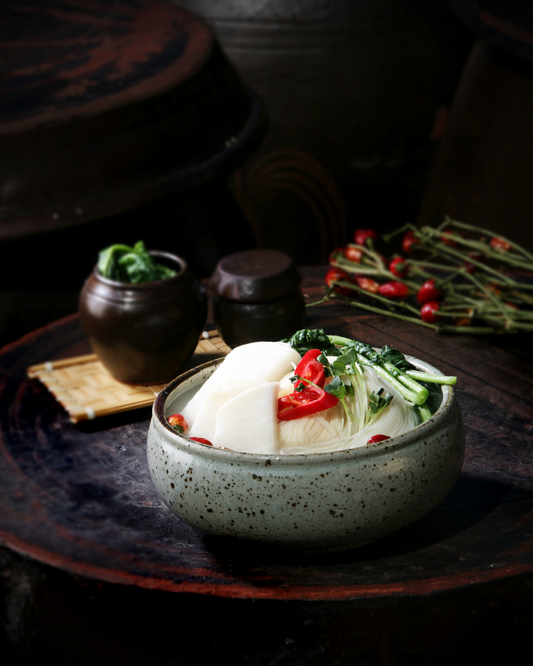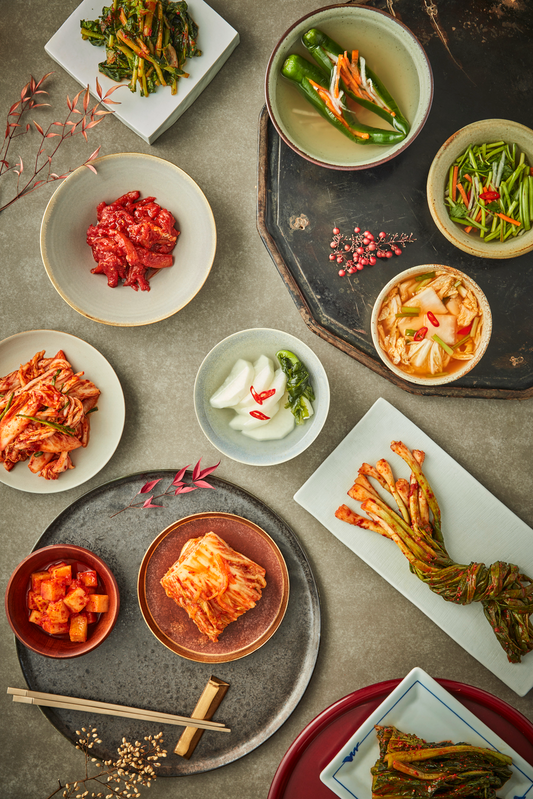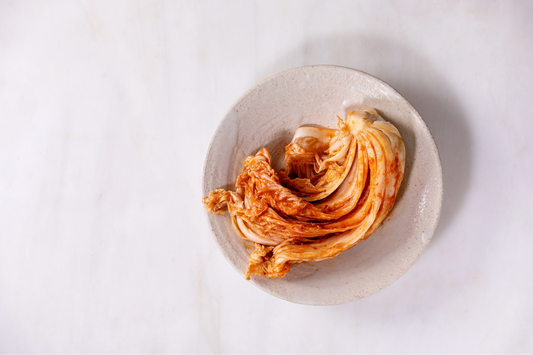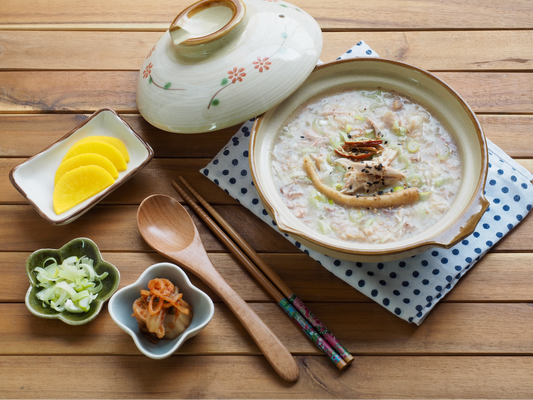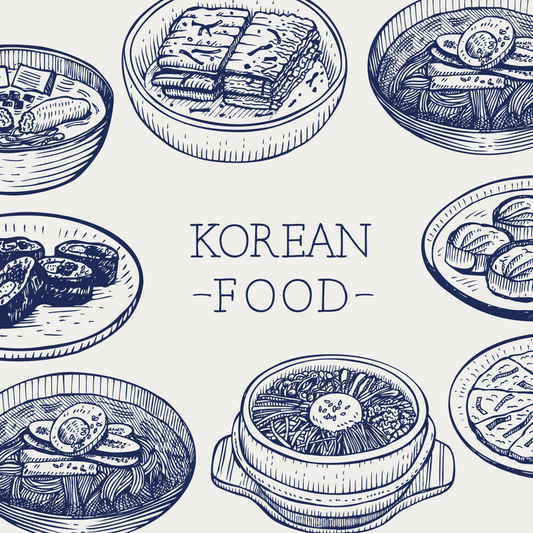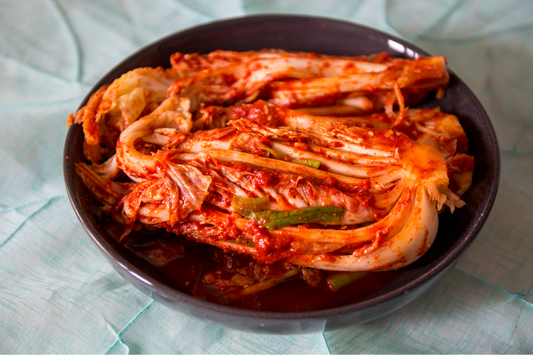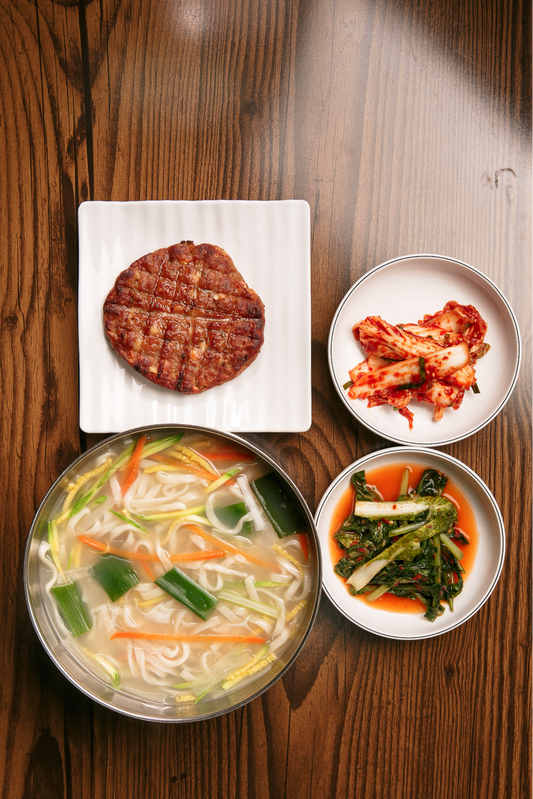Kimchi and Asian Food Pairing: The Flavor Harmony with Pho, Dim Sum, Tonkatsu, and Japanese Curry(Part 1)
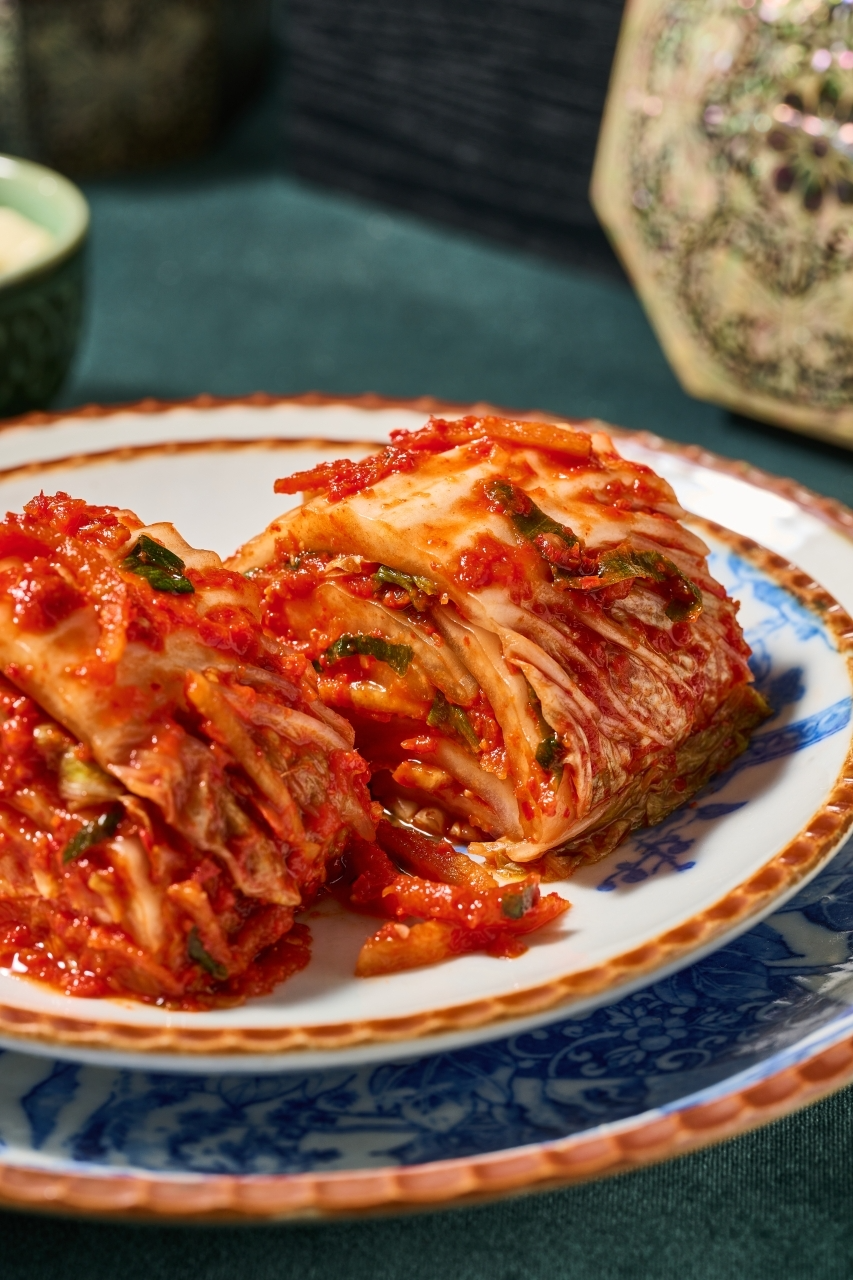
Are your taste buds missing out? The world of Asian cuisine is vibrant, blending traditional Korean kimchi with classic dishes. This creates a feast that shakes up culinary rules. Let your taste buds travel on a journey. It combines sharp, fermented flavors with the subtle and bold tastes of Asia. This kimchi exploration is more than mixing tastes. It changes how we enjoy famous dishes worldwide.
In Asia, food is full of tradition and heritage. This includes the "kimjang," recognized by UNESCO, where people make and share kimchi. There's an unexplored world of flavor harmony to find. Kimchi complements the broth of Vietnamese Pho and cuts through Japanese Tonkatsu’s fat. It's becoming a vital part of an evolving food scene. This fusion of tastes shows genius in food pairing. It celebrates flavors that win hearts globally.
Key Takeaways
- Discover how the zestful tang of traditional Korean kimchi elevates the classic Asian dishes like Pho, Dim Sum, and Tonkatsu.
- Gain insight into the cultural and culinary significance of kimchi pairing in modern gastronomy.
- Understand the health benefits and widespread appeal of fermented food combinations in various cuisines.
- Learn practical tips and recipes to harmonize the robust flavors of Asian dishes with the distinctive taste of kimchi.
- Explore the influence of social media and globalization on the popularity of Asian food pairing and its continued evolution.
- Appreciate the intricate balance that kimchi adds to different regional flavors, reflecting the diversity of Asian culinary traditions.

Pho: The Harmony of Kimchi and Rice Noodle Soup
Explore the delightful pho kimchi harmony. Here, Vietnamese cuisine meets kimchi's bold flavors within traditional Asian dishes. Pho is a beloved Vietnamese dish known worldwide. Its broth is rich with spices and herbs, mixed with rice noodles. It often comes with beef or chicken. This dish shows the heart of Vietnamese culture and cuisine. It offers a meal that's both refreshing and fulfilling.
Adding kimchi to pho makes for an exciting eating experience. It brings the soup's flavor to life with the zesty, spicy touch of fermented Korean cabbage. This combo of rich pho broth and tangy kimchi creates a perfect pho kimchi harmony. It's a culinary bridge connecting Vietnamese and Korean tastes. This mix not only makes eating fun but also boosts health with kimchi's probiotics.
People's love for pho mixed with kimchi shows a bigger liking for kimchi with traditional Asian dishes. It matches well with those wanting tasty and nutritious meals. As Vietnamese food continues to win over hearts globally, mixing it with kimchi highlights the adaptability and innovation in Asian cuisines. This blend offers not just food, but a memorable cultural experience.
The Taste and Characteristics of Pho
Delving into the traditional Vietnamese pho reveals its rich cultural and historical roots. This rich brothy soup tells Vietnam's story of resilience and innovation in food. Born in the early 20th century, pho mixes sweet, sour, salty, and spicy in perfect harmony, showcasing Asian culinary excellence.

Introduction to the flavors and cultural background of Pho
Pho's story started amid complex social and economic changes, growing through history. Initially loved in Northern Vietnam, the 1954 Geneva Accords caused many to move south. This spread pho's recipe, making it more diverse with new ingredients.
In the late 1980s, economic reforms in Vietnam brought fresher spices and herbs to pho, enhancing its taste. The dish reached the United States in 1990, thanks to chef Didi Emmons. Now, it's enjoyed worldwide, from Laos to Russia, becoming a favorite in places like South Korea.
Pho shines with its mix of flavors and textures. It usually has tender meats or chicken, with pho ga (chicken pho) becoming popular during a beef shortage in 1939. The soup is filled with rice noodles and aromatic herbs like basil and star anise, making it deeply satisfying.
"Vietnamese cuisine is characterized by a harmonious blend of sweet, sour, salty, and spicy flavors, each dish a testament to the nation's rich culinary history and geographical diversity."
Traditional Vietnamese pho stands as a global symbol of Asian culinary excellence. It's celebrated for its deep flavors and the cultural story in each bowl. This dish shows Vietnam's cooking skills and is key in its varied cuisine.

Flavor Harmony Between Pho and Kimchi
Exploring Vietnamese and Korean cuisines shows us a fantastic flavor mix. The pho kimchi harmony is a highlight. It blends the best of both worlds in a bowl. Pho is a famous Vietnamese soup with fragrant broth and rice noodles. Kimchi adds zest and spice to it. This combo enhances the meal and follows a global fermented food trend.
How the spiciness of kimchi enhances the rich broth of Pho
Adding kimchi to pho brings an exciting flavor boost. The fermentation of kimchi adds to this. Gochugaru, or Korean chili pepper flakes, gives a fruity heat. It’s not too sharp. This heat blends well with pho's savory broth. The broth gets its taste from simmering bones and spices for hours. This mix increases the taste complexity, creating amazing pho kimchi harmony.
When pairing kimchi with pho, homemade kimchi should ferment for two weeks. This time lets the kimchi's flavors deepen. These flavors go well with pho's spices and herbs. The soft noodles and crunchy kimchi offer a fun texture mix. This improves the dish's taste and appeal.
This food pairing is more than tasty. It also shows cultural respect. It tells a story of culinary unity from Hanoi street carts to Seoul's upscale restaurants. The pho and kimchi combo is a blend that keeps winning hearts worldwide.

Tips and Recipe for Enjoying Pho with Kimchi
Pho, a Vietnamese staple, is perfect for adding kimchi. Its clear broth and rich ingredients pair well with kimchi's bold flavors. By following simple kimchi pairing tips, your pho can become a thrilling dish.
How to add kimchi to Pho for a balanced taste experience
For a great combination, factor in the spiciness and fermentation of the kimchi. Since pho has a mild flavor, kimchi's zest adds a nice spice and texture contrast. Start with a small amount of finely chopped kimchi. This way, it blends into the broth without overwhelming the pho's flavors.
Suggested recipes for enhancing Pho with kimchi
Try topping your pho with Kimchi Stir Fry. Just cook the kimchi in sesame oil and a bit of soy sauce until crispy. You can then add it to your pho, letting each person adjust the flavor strength.
Another idea is making a kimchi-flavored broth for your pho. Simmer kimchi with spices and herbs, then mix it with the pho broth. It creates a flavorful fusion that's both balanced and exciting. Remember, the goal is to complement the pho while introducing kimchi's unique taste.

Dim Sum: The Delicate Combination of Dim Sum and Kimchi
The pairing of dim sum and kimchi is a creative addition to Asian cuisine combination. It brings together the subtle tastes of Chinese dim sum and the bold, spicy kick of Korean kimchi. This mix does more than make meals exciting. It creates a harmony of flavors that many people love.
Dim sum gives us a variety of light bites like steamed buns and dumplings. Kimchi adds a tangy, powerful flavor that makes these gentle dishes more interesting. Take the kimchi mandu from Korea. It's a yummy dumpling filled with kimchi, pork, and tofu. When steamed, these flavors come together in a wonderful way.
Adding perilla seed oil instead of sesame oil in kimchi fillings brings a new taste. This idea, borrowing from the Korean practice of combining kimchi with pork, brings two food traditions together. It's both a delicious experiment and a celebration of these cuisines.
Including kimchi in dim sum recipes is also exciting. For example, crystal dumplings with shrimp or veggies can have kimchi inside. This mix of smooth dough and crunchy kimchi is not only tasty but also looks great. Serving these dumplings with a spicy dipping sauce made with chili crisp and rice vinegar makes it even better.
So, the mix of dim sum and kimchi isn't just about new flavors for those who like to try new things. It also honors the cooking traditions it comes from. This harmony of flavors is innovative and rooted in the rich traditions of Asian food.
The Variety and Flavors of Dim Sum
Diving into dim sum variety is like going on a food journey through Cantonese cuisine. It came from China's lively teahouses. You'll find both old and new dishes that please everyone. Dim sum stands out among traditional Asian dishes. It offers an experience full of culture and cooking skill.

Introduction to different types of Dim Sum and their tastes
For newcomers, the dim sum selection can be exciting yet daunting. You can try soft Har gow, shrimp dumplings, or savory Char siu bao with barbecue pork. Every dish shows off careful Cantonese cooking, using fresh stuff and light spices.
Cheong fun, or rice noodle rolls, come with beef, shrimp, or pork. They blend taste and texture perfectly. Siu mai dumplings mix pork and shrimp, topped with bright orange roe. This dish is a beautiful mix of flavors and colors.
You'll also find vegetarian dim sum, as tasty as the rest. They may have mushrooms, bamboo, and water chestnuts. You can have them steamed or fried. These are great for breakfast or any meal, adding to the food adventure.
Dim sum isn't just about food; it's about spending time with friends and family. It brings people together for good conversation and making memories. After all, dim sum means 'touch the heart'.

The Perfect Pairing of Dim Sum and Kimchi
Dim sum and kimchi create a unique, tasty mix. This mix combines traditional Cantonese dishes with Korean flavors. The bold spiciness of kimchi, especially in Cantonese dumplings with kimchi, offers a lively contrast. It stands out against the mild flavors of dim sum.
How kimchi can provide a refreshing contrast to the savory, steamed bites of Dim Sum
Kimchi's spiciness enhances the dining experience in a special way. Each steamed or fried dumpling, lightly seasoned, pairs well with the tangy kimchi. This not only boosts the flavors but also adds a crunchy texture. It's different from the soft dim sum.
Those who love Cantonese dumplings with kimchi will see kimchi as more than a side. It enhances the dumplings' flavors. Whether inside the dumplings or on the side, kimchi adds a new taste layer. It's unexpected yet matches well. This pairing celebrates the best of Cantonese and Korean foods.

Tips and Recipe for Pairing Dim Sum with Kimchi
Discovering how Asian dishes complement each other is an adventure. It's especially true for the bright tastes of kimchi with soft dim sum. To master kimchi pairing tips, it's key to know both foods well. Every bite should highlight the complex flavors, so here's a guide to perfect pairing.
Choosing the right kind of kimchi for different Dim Sum dishes
Select the right kimchi by looking at what dim sum you have. For light dishes, like steamed shrimp dumplings, choose a gentle, white kimchi. It adds freshness without overshadowing the dim sum. For heavier meals, like pork buns, use a strong, red kimchi. Its spicy taste enhances the food beautifully. Matching kimchi with dim sum can create a superior eating experience.
Ways to serve Dim Sum with kimchi for an added flavor kick
To add kimchi to your dim sum meal, serve it on the side. This lets everyone decide how spicy they want their food. Another idea is to put kimchi inside the dim sum. You could add it to dumplings or atop bao buns. This mix of Korean and Cantonese cuisines brings out the best in both.
Note: Pairing kimchi with dim sum is both tasty and a topic for discussion. It makes meals unforgettable. These kimchi pairing tips are for anyone. Foodies or new cooks will make their next meal a mix of Asian delight.
